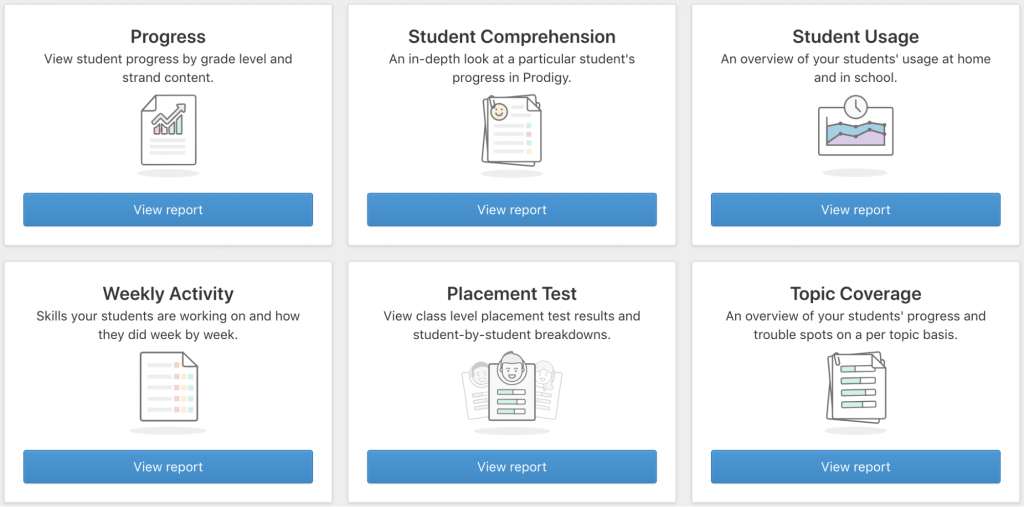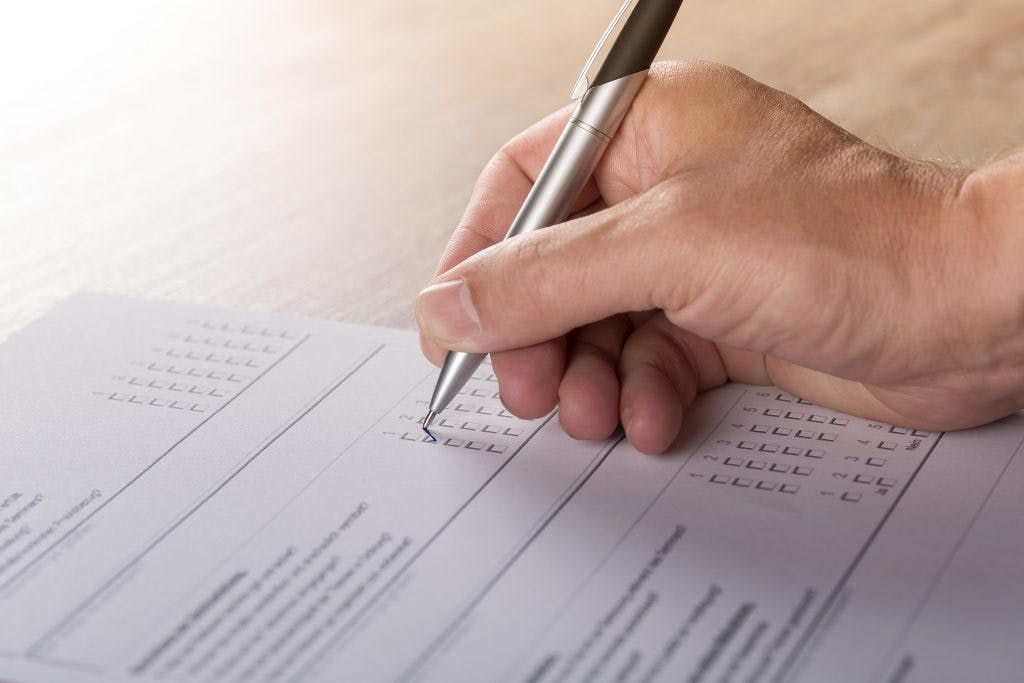Data Driven Instruction: Definition and 11 Strategies
All Posts
It’s all about the data.
In your school, there is a lot of data to be managed. There’s information about staff, curriculum, students and their families, tests, exams, regulations, budget, payments, teacher evaluations, events…
Getting a headache just thinking about it?
With all that data floating around your school, the idea of data driven instruction may seem overwhelming.
After all, capturing, understanding, and putting to work information about your students takes time.
The idea of data driven instruction isn’t new. But, how exactly does it work? What actionable steps can you take to make sure teachers are working well with data driven instruction?
First, let’s discuss what’s involved in data driven instruction. Then, we’ll reveal 11 steps you can take today to build a culture of data driven instruction in your school.
Plus, we've put together a downloadable list of the 11 steps that you can keep at your desk!
What is data driven instruction?
In short, data driven instruction involves gathering together a database of information about the students in each classroom, and using that information to improve the quality of teaching in the classroom.
While much of this work is done by the teachers themselves, it’s up to school leadership to build a culture of data driven instruction.
Every classroom is full of students with their own needs, abilities, and levels of understanding. Data driven instruction aims to take all of this information into account when building curriculums, or even directly when teaching in the classroom.
There are three main steps involved in data driven instruction:
- Data collection: Gather information from class assessments and standardized test results, as well as observations from the teacher, and create a database on information.
- Data analysis: Separate essential information from non-essential information. Watch for patterns and dive into the reasons behind these results. Draw conclusions and formulate teaching plans.
- Action: Congratulate your class and move to the next topic, or prepare time to re-teach certain ideas to the class.
Going deeper than the "what"

Until now, many schools have taken data driven instruction to mean building up a database of what the students know and what they don’t know.
However, to truly benefit the students in your school, you need to understand more than just the "whats".
Exam scores and standardized test results only tell you the knowledge level of the students. You’ll need to dig deeper to understand the "why" and "how" of the situation.
For example, imagine that the majority of one science class doesn’t have the required knowledge to pass the standardized test. The ‘what’ is clear: they lack equivalent understanding of the subject.
Now, it’s time to figure out the "why" and "how".
So, why did these students miss key information taught in the class? Is there some sort of distraction that can be minimized? Did the way the information was presented have an effect on their understanding?
Then, how can these students be re-taught in such a way that the information sticks? If they clearly understood other topics that were taught during the same semester, how did they learn those topics? How can you apply the same principles to re-teach the information they didn’t learn?
Gathering the necessary data to answer the "what", "why", and "how" is the basis for data driven instruction.
So, what strategies will help you develop your school’s data culture?
11 strategies to build a culture of data driven instruction in your school
1. Involve teachers in the process
While you as the school leader are setting the groundwork for data driven instruction, it’s the teachers that will have to do most of the heavy lifting.
That’s why it’s important for teachers to be involved in the process of creating and building your data driven culture.
Opportunities like this help teachers deliver data-driven instruction and helps minimize test day anxiety for students who are new to the Regents exam! https://t.co/CMAUaZE7N1
— Alex Servello (@AlexDServello) February 27, 2019
There’s a lot of work involved in creating actionable plans that get to the heart of student assessment and data analysis. So, involve your teachers in making these plans. Get together and set up the routines and standards that will be the basis for data driven instruction in your school.
Teacher training is also extremely important. Once you set the standards for data collection, analysis, and application, teachers need to understand exactly what that means for them in their day-to-day activities in and out of the classroom.
So, train teachers to quickly analyze data and draw conclusions that spark action, thus helping them implement a data driven instruction policy.
2. Slowly scale your efforts
Diving into data collection and analysis for every class in your entire school may seem daunting.
That’s because it’s too much work.
Instead of the ‘all-or-nothing’ approach, try to start with just one class.
Gather data on student knowledge levels, and how they learn. With the goal of starting small, build a process that makes data easy to collect and translate into action.
For example, have teachers track the number of times students ask for clarification on a topic in the classroom, as well as what teaching strategies they were using at the time. This data can be easily translated into an action: remove teaching methods that don’t present the information clearly.
Once you start to see results in one or two classrooms, you can start to expand the same methods of data collection and application to the rest of the school.
3. Set the right standards for assessments

Don’t spread yourself too thin. There are plenty of things that students ‘should’ be learning. And teachers may have their own ideas of what is important information in a lesson plan.
However, to have definite, stable results in data driven instruction, you need to define the standards of assessment.
That means taking each unit and answering the following questions:
- What information is vital for students to learn?
- What will they need to know and understand in order to pass SATs or other important exams?
- What information would absolutely need to be re-taught if students hadn’t mastered it by a certain time?
Once these standards are in place, it’s easier for teachers and students to work towards solid learning goals, and to collect the necessary data for better teaching.
4. Build routines for interim assessments
While summative assessments are important, never forget that learning is an ongoing process. If a number of students never mastered a topic that was covered at the beginning of the school year, it would be easier to address the problem earlier than in the weeks before the summer break.
So, work with the teachers at your school to build a system for interim (or formative) assessments.
Preservice teachers in #Read4563 explore authentic ways to check for understanding before, during, & after a lesson. No more boring worksheets! @TWUreadingdept #formativeassessment #DataDrivenInstruction pic.twitter.com/kkxrFUp6sE
— Dr. Tamra Dollar (@TamraDollar) February 21, 2019
First, take the standards that you set above. Then, divide the main topics throughout the school year.
For example, let’s say an English class must master the topic of sentence structure by the end of the semester. So, take that topic and divide it into its main parts. What is the goal date for students to master an understanding of adjectives, verbs, subjects, and objects? When do they need to understand the placement of all these parts in the sentence?
Then, based on these main parts of the essential topic, set dates for interim assessments. Whether it’s through tests, team projects, essays, etc., students must be able to demonstrate mastery of the topic in question.
These interim assessments will help teachers plan for the needs of each student, giving them time to re-teach essential ideas while the topic is still in their mind, rather than weeks or months later.
5. Collect only the data you need
Part of the reason that data driven instruction is so daunting is that there is just so. Much. Data.
Implementing a successful strategy involves thinning down the data only to what is necessary.
Obviously, the teachers in your school have plenty on their plate already: don’t add wading through excessive data to their workload.
Instead, make sure that your data collection processes center on information that is essential. While making sure that your assessments are standardized is important, as discussed above, another way to do this would be giving teachers specific guidelines on how to collect and analyze student data.
That way, all the teachers involved are collecting only necessary data, and the time they spend on analyzing that data is more focused on what’s really important.
6. Set goals that are visible for students

The teachers aren’t the only ones involved in collecting and analyzing student data: the students can also get involved!
After all, the endgame of data driven instruction is to help students reach educational goals. So, show them how they’re doing with those goals!
This can be done by creating visual goals and allowing students to measure their own progress. Help teachers plan time for student self-analysis. Give kids the opportunity to look back on their work, see what they’ve accomplished and develop a growth mindset.
To make this strategy really stand out, make the progress visual.
For example, when coming to the end of a unit, teachers can use classroom response systems (or ‘clickers’) to get a fast overview of how much the class understands of the topic. These fun, interactive tests allow all students (even the really shy ones in the back) to participate.
At the end of the test, most clicker systems produce a bar chart that displays how many students chose each answer choice. This gives students and teachers an easy view of the progress they’ve made, or where they’re still lacking.
7. Use EdTech that displays learning progress for students
It’s no secret that ed-tech is making strides in the classroom.
But did you know it can actually help you (and your teachers) to implement data driven instruction?
In fact, 75% of teachers identify data driven instruction as a top trend for EdTech.

That’s up from just 28% in 2017.
Why the increase? Because most ed-tech programs take advantage of the answers provided by students to give teachers clear data about what’s going on in their classroom.
Prodigy is a fun and adaptive, curriculum-aligned math game that helps you easily quantify student learning and achievement. Students enter the game-based learning platform, where they answer skill-building math questions to go on adventures and explore new worlds. You’ll love the powerful report tools that help drive student learning.

You’ll be able to find easy-to-read reports that detail exactly what skills students have mastered, as well as which ones they’re weak in. This makes data analyzation even easier, since the information has already been collected and organized. Teachers can then make informed decisions that help the whole classroom learn better.
Create your free account and start reaping the benefits of your tetacher dashboard.
8. Build a schedule for data analysis

It’s time to give your teachers guidelines for analyzing data.
For example, instead of asking teachers to write out their conclusions after reading through the data, create a uniform process for data analyzation. You could do this by creating reports with short, specific questions that teachers must answer on a scale of 1-10 based on the data they’ve collected.
- What kind of mastery does the class (or student) have in this topic?
- How prepared is the class to answer questions about this topic on a standardized test?
- Can the class explain with ease their understanding of this topic?
Then, teachers can list specific knowledge gaps or weaknesses that they’ve seen in either individual students or the class as a whole.
Next, they’ll need to analyze the data collected about teaching methods. Using the same 1-10 scale, they can rate the different teaching methods they used by how well the class responded to them.
Lastly, teachers should list at least 3 actions they plan to take in order to improve their teaching for the next unit. This could include re-teaching certain topics, or changing up their in-classroom methods to make the information stick better.
Now, you need to build a schedule for your teachers to analyze that data.
Some schools set specific time in the schedule of the teachers to analyze the data they’ve collected. Ideally, this would be soon after assessments are made.
Having a clear process and schedule helps teachers and school leaders to keep a handle on student progress.
9. Encourage teachers to collaborate with each other

When it comes to data analyzation, teachers should know that they don’t have to go it alone. When scheduling time for data analyzation, encourage teachers to work together to get through the data they’ve collected.
This method helps both teachers and students to reap the benefits of data driven instruction. They say two work better than one, and this is a prime example: two or more teachers working together to understand the data they’ve collected and brainstorm ideas of how to proceed.
Teacher collaboration is also a form of professional development. Teachers will learn valuable skills from each other, and build off of each other’s ideas to create an even better learning experience in the classroom.
10. Review the effects of re-teaching

So, after assessment, a class needed re-teaching of an essential topic. Instead of just going through the information again and moving on, it’s important that teachers revisit their assessments to ensure that students are really getting the sense of the information.
Using clicker tests as mentioned above is a great way to get a fast overview of the class’s overall understanding of a topic. This method won’t take a lot of time, and allows teachers to see immediate feedback on whether the re-teaching had the desired effect.
11. Chart the progress of your school as a whole
Once your data driven instruction plan is in place, it will be interesting to watch what a difference it makes in your classrooms.
So, make sure to record a baseline from the starting point. Store those first classroom assessments and the analysis that teachers took away from the data they collected.
This will allow you to see the incredible results that data driven instruction brings. As an example, the New Mexico School for the Arts used data driven instruction principles to increase their proficiency on PARCC math tests from 29 to 40 percent, and on PARCC English language arts from 80 to 87 percent.
Conclusion: Give your school the advantage of data driven instruction
Using data to improve learning experiences in your school is the way of the future. Teachers need to know what’s going on in their students’ heads in order to help them, and you need to understand what’s happening in classrooms in order to better direct your school.
Remember, data driven instruction involves three essential steps:
- Data collection
- Data analysis
- Action
By deciding on standards and providing guidelines to teachers, you’ll help build a culture of data driven instruction in your school.
Educator? Try Prodigy — the fun and engaging curriculum-aligned math platform used by more than 2.5 million teachers.
Educators can use Prodigy to:
- Gauge student preparation for standardized testing
- Inform data driven instruction efforts and drive student achievement
- Pinpoint students' working grade levels and their levels on key strands



